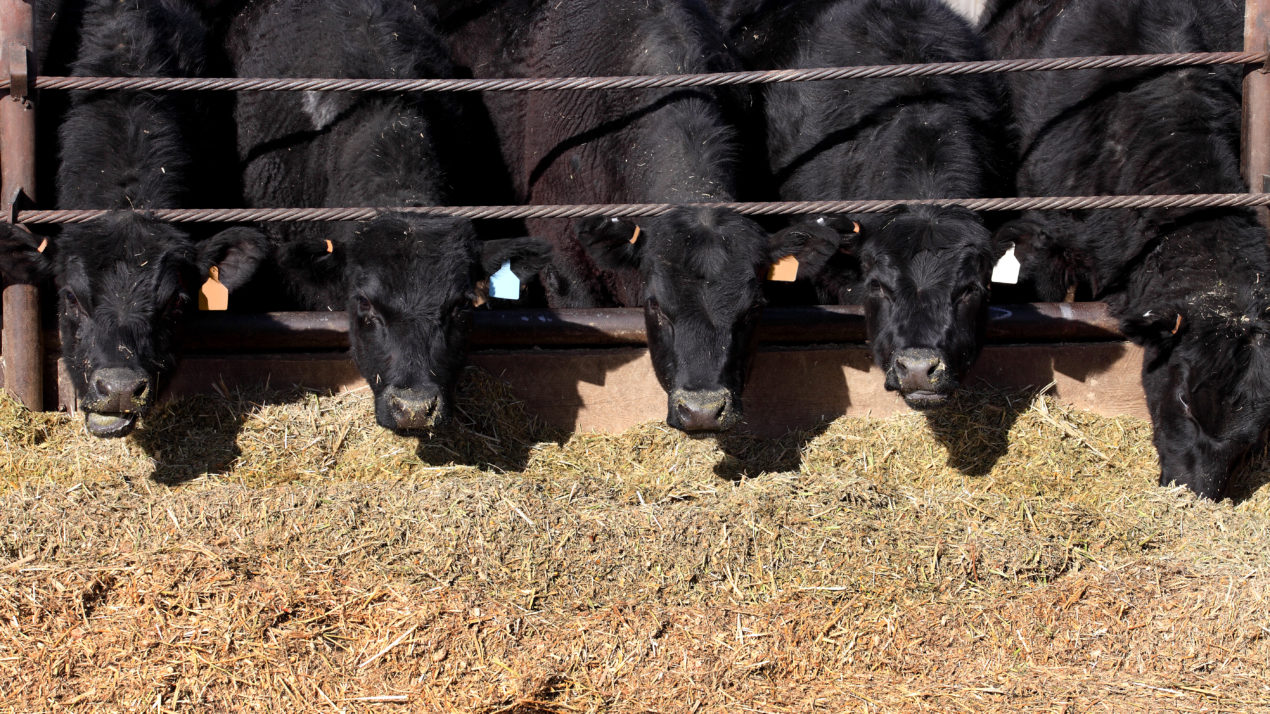
Prepared and written by Jeff Swenson. The Market Update draws information from several sources, including trade publications, radio broadcasts, agricultural news services, individuals involved in the industry as well as USDA NASS and AMS reports. Contact Jeff at [email protected]
Packers were seeking cattle, and daily harvest numbers have been running higher this week. Improved carcass cut-out prices are one major factor in higher harvest numbers. Cash cattle prices were struggling to gain $1.00/cwt in the south and scratching to stay steady in the north this week. This is the third week in a row that carcass weights have averaged 901 pounds, still significantly higher than this time last year. It’s easy to wonder if marketing heavier cattle is a trend that will continue in the long term. Beef cut-out values are trending higher and futures contracts are coming off of last week’s losses. Those two factors may be telling us the market is finding its seasonal low and better cash prices are in the near future. We are all tired of hearing it, but it’s worth repeating – 2020 hasn’t been a predictable year. Restaurant demand and traditional holiday purchases are uncertain heading into November. Beef exports had a good week at 24,900 metric tons with 20,400 metric tons of that for 2020 delivery. Japan, South Korea, China and Mexico made up the largest buyers. #
Farm gate hog prices were lower this week on both the live and carcass basis. The pork cut-out price was higher Thursday (November 5) and like the beef sector, it’s hoped that will pull cash prices higher. This increase comes after consecutive days of lower prices, in fact the cutout had been lower six of eight days. From a traditional seasonality standpoint we’d expect packers to have an easier time finding buyers for every part of the pig. Labor continues to be the challenge and it has caused less boneless pork to be put on the market. Carcass weights continue to be in line with 2019, so while there’s a large hog supply, those hogs aren’t compounding the supply challenges by adding even more pork to the market. Export sales for the week were a source of good news. Total sales were 43,000 metric tons, all but 800 metric tons are for 2020 delivery. This was up 46 percent from the previous week and 18 percent above the four week average. Mexico, China, and Japan were the largest buyers. Over 100 cases of African Swine Fever has been found in Germany now and China continues to ban imports of pork from that country. #
US harvest progress will be helped by good weather forecasted for the entire country next week. Eighty two percent of the nation’s corn had been harvested as of November 1, compared to the five-year average of 69 percent. Wisconsin corn harvest was reported at 55 percent complete. To illustrate the challenge that was the 2019 growing year, only 19 percent of Wisconsin corn had been harvested at this time last year. The favorable week ahead should see farmers finish up soybean harvest in the state. On November 1, 91 percent of soybeans had been harvested compared to 57 percent this time in 2019. Wisconsin is slightly ahead of the national average as 87 percent of US soybeans have been harvested. Fall tillage in Wisconsin is 49 percent completed, more than four weeks ahead of 2019 and nine days ahead of the average. #
Holiday and ethnic demand are keeping lamb prices strong, and steady prices are expected to continue. Questions regarding Thanksgiving celebrations – if families will get together, how large the gathering will be – are weighing on turkey producers’ minds. Butterball, a company that has a large market share of holiday turkeys says they are expecting smaller gatherings, but aren’t convinced customers will want smaller birds. #
High yielding Choice beef breed steers and heifers at Wisconsin and surrounding state auction markets were mostly steady to $1.00 lower, bringing $99.00 to $103.00/cwt. High-yielding cattle with an overnight stand were bringing $104.00 to $105.00/cwt. Holstein steers were steady at $92.00 to $96.00/cwt. A few high dressing, Holstein steers did sell above $96.00, but that wasn’t widespread or on many lots. Cows were steady at 42.00 to $57.00/cwt. Blemish free cows in fleshier condition were lower with the top end selling in the $60.00s/cwt. Dairy breed bull calves were lower at $50.00 to $160.00/head. Market lambs were higher, bringing up to $202.00/cwt. Lighter weight lambs brought up to $230.00/cwt. Feeder cattle are under pressure amid concerns of higher feed costs. #

